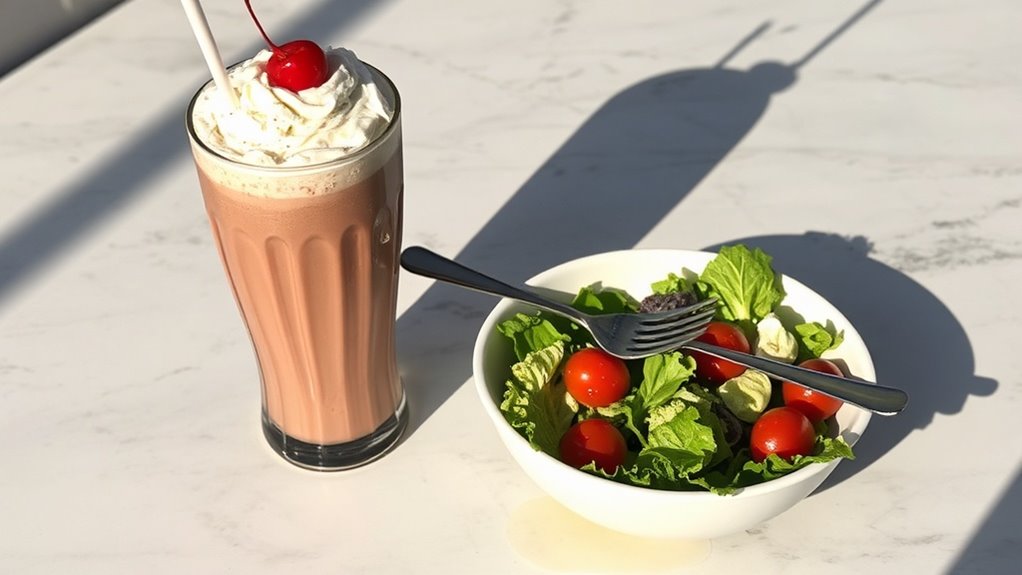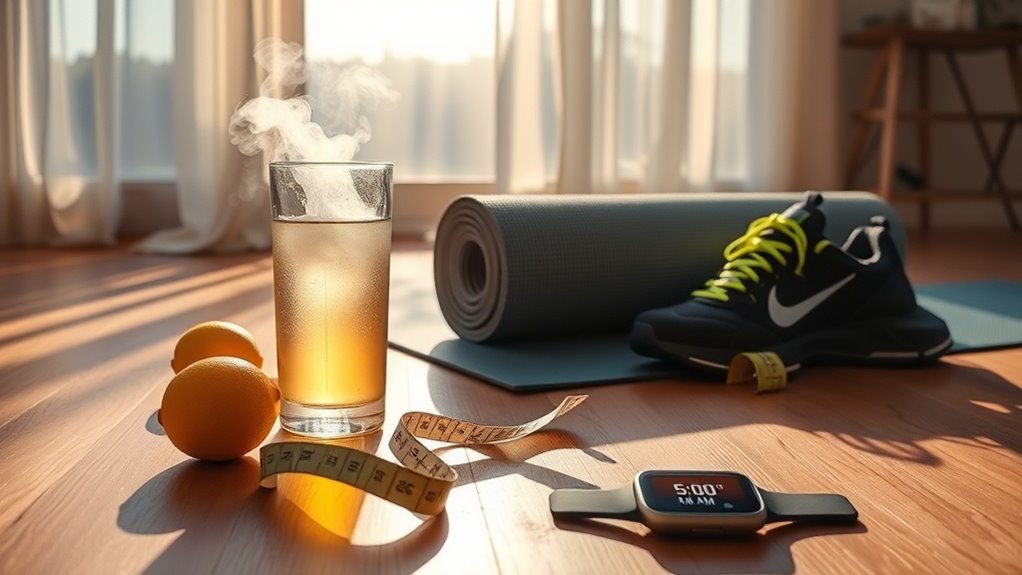The One Exercise That Burns More Fat Than Running!
If you’re looking to torch fat more efficiently than with running, you might want to consider High-Intensity Interval Training (HIIT). This method combines short bursts of intense exercise with brief recovery periods, offering a unique approach to fat loss. But what makes HIIT so effective? The answer lies not just in the workout itself, but in its impact on your metabolism. Let’s explore how HIIT can reshape your fitness routine and accelerate your weight loss goals.
Understanding High-Intensity Interval Training (HIIT)
High-Intensity Interval Training, or HIIT, has become a popular choice for those looking to maximize fat loss in a shorter amount of time.
If you’re part of a community striving for fitness, you’ll find HIIT offers a fun and engaging way to get fit together. This method alternates between short bursts of intense exercise and brief rest periods, keeping your heart rate elevated and your energy high.
Some of the best fat-burning exercises you can incorporate include burpees, jump squats, and sprints. These moves not only challenge your body but also create a sense of camaraderie as you push through the tough moments alongside others.
Plus, you don’t need hours at the gym; just 20-30 minutes of HIIT can yield incredible results. Additionally, integrating short bursts of intense exercise can significantly enhance your metabolism and calorie burning post-workout.
The Metabolic Impact of HIIT vs. Running
When comparing the metabolic effects of HIIT and running, you’ll find that both forms of exercise offer unique advantages. HIIT, with its bursts of high intensity followed by rest, ramps up your metabolism significantly in a short time. You’ll not only burn calories during the workout but also boost your metabolic rate for hours afterward. This means you can achieve impressive results even with shorter sessions.
On the other hand, running is fantastic for building endurance and sustaining a steady calorie burn over longer periods. It promotes cardiovascular health and can be a meditative experience, connecting you with nature or your running community. Additionally, incorporating strength training into your routine can further enhance your overall metabolic health.
Ultimately, both methods have their place in your fitness journey. You can discover what resonates with you, whether it’s the intensity of HIIT or the rhythm of running.
Embrace what you love, and you’ll find yourself more motivated to stick with it.
Exploring the Afterburn Effect
Although many people focus on calories burned during a workout, the afterburn effect—known scientifically as excess post-exercise oxygen consumption (EPOC)—is where the real magic happens.
This phenomenon means you keep burning calories even after you’ve left the gym. Here’s why it’s so powerful:
-
Increased Metabolism: Your body works overtime to restore itself post-workout, burning extra calories in the process.
-
Extended Fat Loss: The afterburn effect can last up to 24 hours, maximizing your fat-burning potential well after you’ve finished exercising.
-
Boosted Energy Levels: Engaging in high-intensity workouts can elevate your energy, helping you feel more vibrant throughout your day. Additionally, incorporating strength training into your routine can further enhance the afterburn effect.
Time Efficiency: Maximizing Fat Loss in Less Time
The afterburn effect can significantly enhance your workout results, but if you’re short on time, you need strategies that maximize fat loss in a shorter duration. High-Intensity Interval Training (HIIT) is your best friend here. By alternating between intense bursts of activity and short rest periods, you can torch calories in a fraction of the time you’d spend on traditional cardio.
Incorporate compound movements like squats and push-ups, which engage multiple muscle groups, further boosting your calorie burn. You’ll not only feel accomplished, but you’ll also notice changes in your body faster than you think. Additionally, the thermogenic effect of food can further enhance your results by increasing your metabolism through digestion and nutrient processing.
Don’t forget to stay consistent; even short workouts can yield amazing results when done regularly.
Connect with others who share your fitness goals. Together, you’ll motivate each other and celebrate those small victories, making your journey not just efficient but enjoyable.
You’ve got this—let’s make every minute count!
Scientific Evidence Supporting HIIT
Research consistently shows that High-Intensity Interval Training (HIIT) can be more effective for fat loss than traditional steady-state cardio.
If you’re looking to join a community that prioritizes effective workouts, HIIT is where it’s at. Here are three compelling reasons to embrace HIIT:
-
Increased Caloric Burn: Studies reveal that HIIT can burn up to 30% more calories than traditional cardio in a shorter amount of time.
-
Afterburn Effect: HIIT boosts your metabolism long after your workout, leading to additional calorie burn, known as excess post-exercise oxygen consumption (EPOC).
-
Improved Insulin Sensitivity****: Research indicates that HIIT can enhance insulin sensitivity, which is crucial for fat loss and overall health.
Moreover, incorporating small movements throughout the day can complement your HIIT routine and further support your weight loss goals.
Jumping into HIIT not only helps you shed pounds but also connects you to a vibrant community of fitness enthusiasts.
You’ll feel the difference in both your body and your social circle!
Practical HIIT Workout Examples for Fat Loss
When you’re ready to dive into HIIT for fat loss, having a few practical workout examples can make all the difference.
Start with a simple circuit: 30 seconds of burpees, followed by 30 seconds of rest, then 30 seconds of mountain climbers, and another 30 seconds of rest. Repeat this circuit four times.
Another great option is the Tabata method: 20 seconds of high knees, 10 seconds of rest, repeated for eight rounds. This keeps your heart rate up and maximizes fat burn.
You can also try alternating between sprinting for 20 seconds and walking for 40 seconds. Aim for 15-20 minutes. Incorporating capsaicin-rich foods into your meals can further enhance fat oxidation and support your HIIT training efforts.





